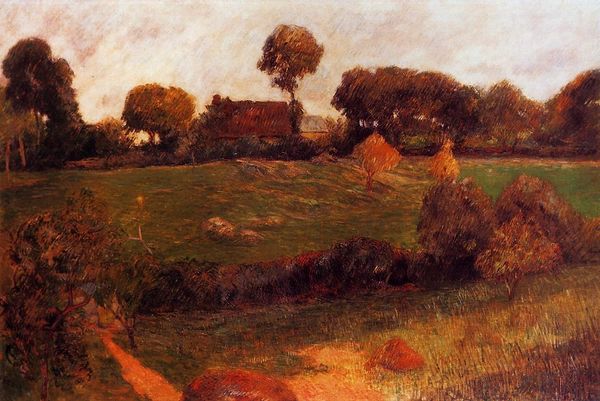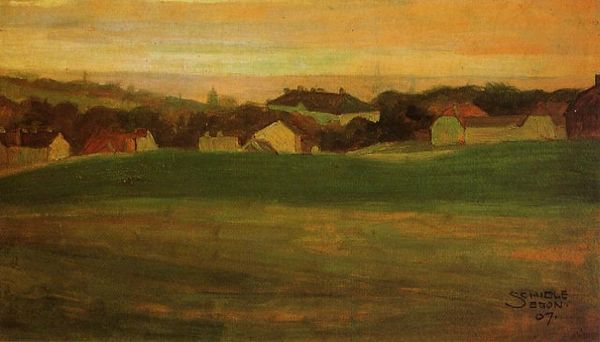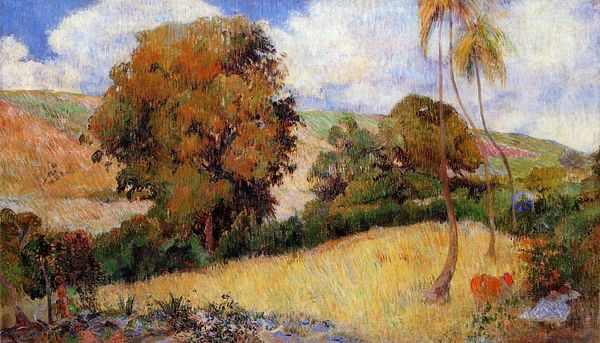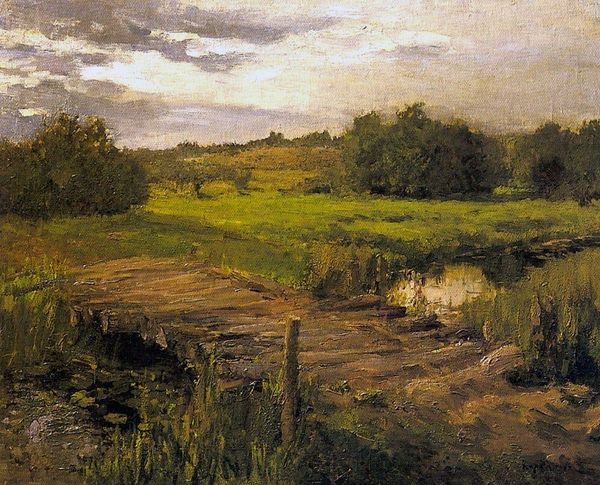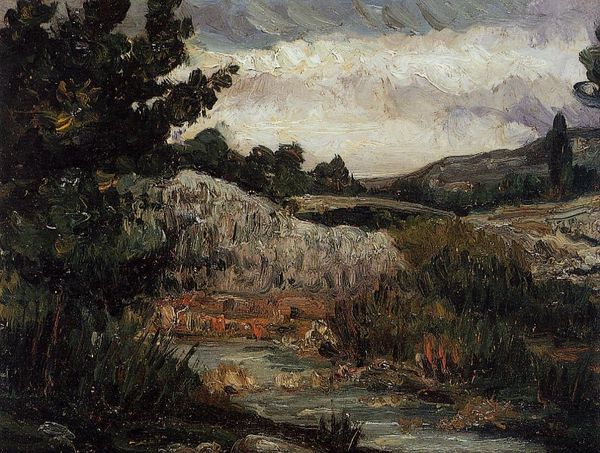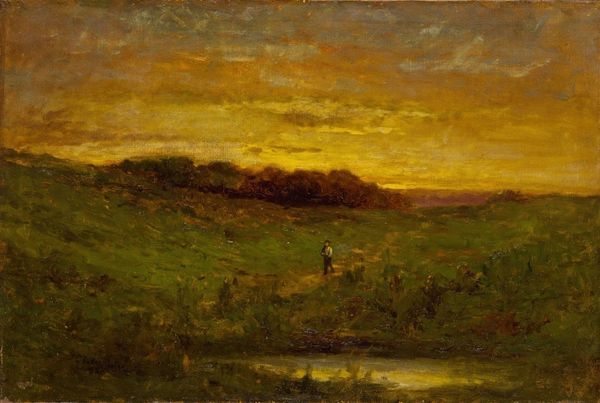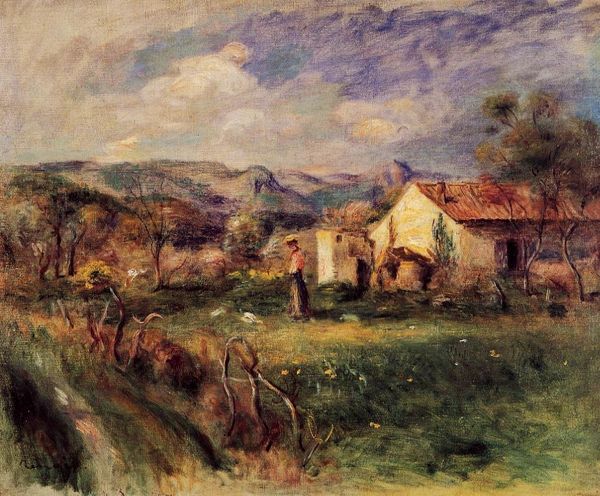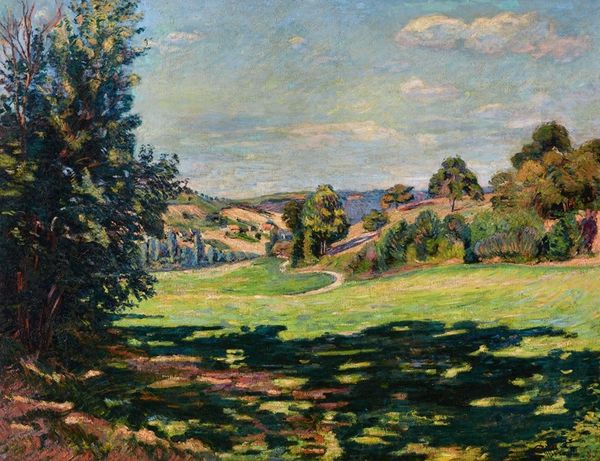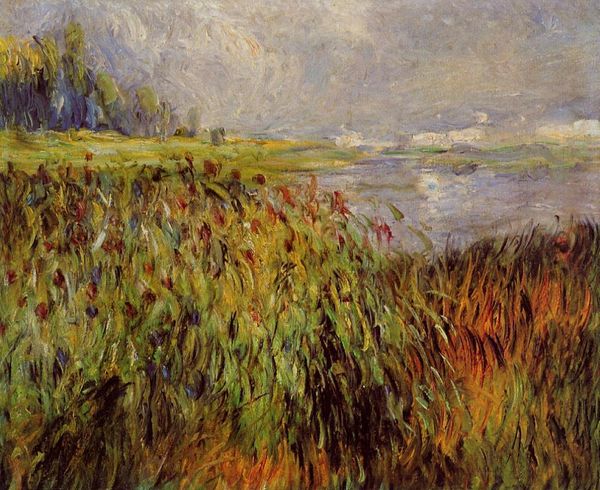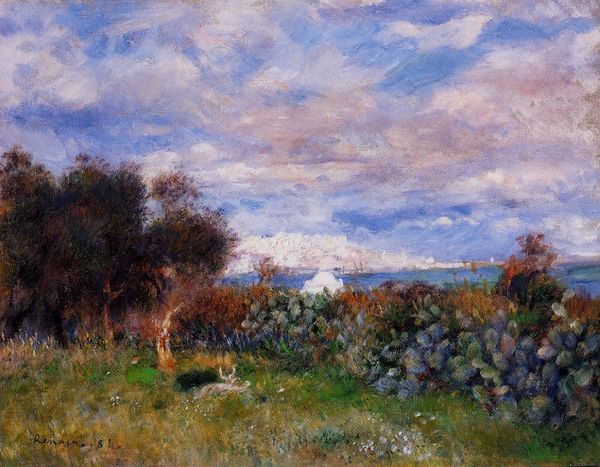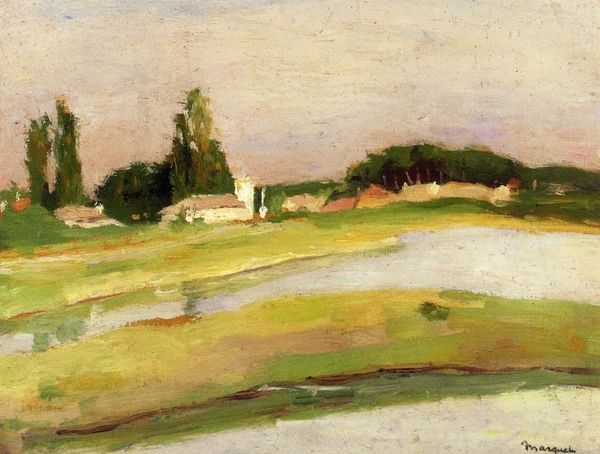
Copyright: Public domain
Editor: This is Renoir’s "The Clearing," painted in 1895, using oil paint. I’m immediately struck by the layering of colours, and how that seems to almost soften the light, which feels very inviting. What stands out to you in this piece? Curator: I notice how Renoir, like many Impressionists, invokes a sort of lost Eden. Think of the Romantic painters, then consider Renoir; can you see how nature is portrayed as an idealized, almost mythic space? Note the lone house tucked amongst the trees, perhaps a visual signifier of humanity seeking solace within that untouched wilderness, but the true power rests with nature. What sort of visual contracts do you see at play? Editor: I see the obvious colour contrasts – the bright greens of the field with the darker blues of the sky above, the reds of the houses in contrast to the trees, all rendered through these blurred brushstrokes. Is there anything symbolic in the objects themselves, such as the lone house you pointed out? Curator: Well, think of that house less as a simple dwelling and more as an emblem, wouldn't you agree? It suggests both shelter and a kind of isolation. The clearing itself - a break within the forest - can symbolize clarity, a moment of understanding within the overwhelming complexities of life, or perhaps humanity finding our own clearing in the face of nature's forces. Does the placement within the overall composition shift or solidify that symbolic reading, would you say? Editor: It does seem like a beacon within the landscape, adding an extra layer of depth. I initially thought the landscape was merely pretty, but you've shown me how it also represents Renoir's complex dialogue between humanity and nature. Curator: Precisely. Images carry within them the cultural weight and collective memory that can shape, even manipulate, their viewer’s understanding. Appreciating art in a social, political, and historical context makes it more vibrant and evocative.
Comments
No comments
Be the first to comment and join the conversation on the ultimate creative platform.
